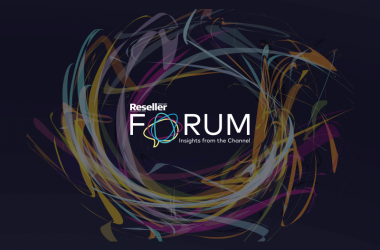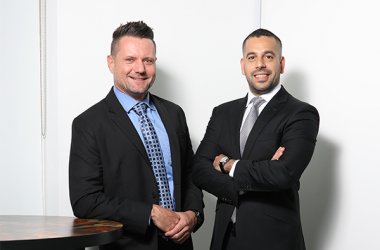
Four years into the making and Microsoft?s Surface is beginning to look like the board room device of tomorrow. With the second version of the developer tool kit available since July of this year, partners are beginning to understand how to exploit the power of the multi-user, hands-on, 360 degree immersive and interactive user experience.
How did Surface first originate in Microsoft’s product portfolio?
Palacanda: From our perspective it was a product that came from innovation. It started at Microsoft’s research and development organisation. The initial idea was to find new ways in which people can start interacting with a computer. Are there more natural ways in which people can start interacting with a computer and digital content? How do people actually interact with computers, can we change the interaction paradigm?
They presented the idea of Surface to Bill Gates. He said it is a pretty natural way that people interact with computers, using hands, gestures and everyday objects and bridge them with digital content. Surface was supported by Bill.

We see videos and pictures of Surface being used in multiple consumer and applied situations. When Surface as a product was first developed was it intended to be used in the consumer or corporate and enterprise space?
Palacanda: At the time of development and innovation, they had not actually decided whether it was to be focussed in a consumer or in a commercial environment. Once we decided to actually go and pursue this research and development initiative into a product group, we had to decide whether to go into the consumer space or corporate or commercial segment. For version one, when we finally decided to productise this innovation, we decided to go into the commercial space.
Again when Surface was launched what was the thinking in terms of the adoption path, how was it meant to reach the end customer?
Palacanda: In 2007 when we launched Surface, it was a pretty expensive value proposition. But the key thing we decided from a partner, developer and channel perspective, was we wanted to change the paradigm of the way people interacted with digital content or even a computer. When you look at the first version of Surface, it was a horizontal multi-user experience, which could recognise objects from a 360 degree user interface.
It changed the way partners and developers needed to start thinking about developing applications towards a horizontal form factor. Traditionally they were thinking of building things for a vertical space, this was a different interaction paradigm.

Our goal with version one was to make sure we got a robust eco system of partners that could actually develop touch applications, which exploited multiple people interacting with it and the whole aspect of natural user interface while moving away from mouse and keyboard.
How does Surface fit in with the dynamics of devices today?
Palacanda: Over the last two or three years we have noticed a lot of things happening around touch including the iPhone, iPad and tablets. Touch has become ubiquitous in the way we all interact with digital content. Since Touch is ubiquitous, customers are now asking for touch solutions. There is actually a need for partners to start providing solutions that exploit the whole element of touch.
From a partner perspective, over the last three to four years, we have actually had a good robust ecosystem, which has started exploiting natural user interface and touch. All our partners are thinking about developing applications that exploit the concept of touch, Surface naturally lends itself to doing that. There was also the push from the customer stand point where they were actually asking our partner ecosystem for more interactive touch experiences.
We notice that Samsung has produced the Surface device. What is the long term relationship between Microsoft and Samsung as far as Surface is concerned?
Palacanda: One of the cornerstones in moving to the next version of Surface was we wanted to have hardware and software working well together. We went and partnered exclusively with Samsung because we wanted a partner that would be able to work with us very closely, right from the development and design of the product to actually taking the product to the market. Samsung is going to be the exclusive provider of this technology. The benefit from the partner perspective is now they can actually get the device from Samsung and provide an end to end solution to the customer.
The difference between version one and two is previously the partner had to build the solution for the customer and the customer had to directly buy the hardware from Microsoft. Now the partner can provide an end to end solution for the customer. We have developed a robust software developer kit and are distributing it on MSDN. All a partner needs to do is leverage the familiar tools and technology that Microsoft has. The core infrastructure of the product and the tool kits are the same. They are Dot Net 4.0, Visual Studio 4.0, XNA 4.0 and WPF 4.0. The device is built on Windows 7.0.
What is the role of the Surface device? Where is the seat of intelligence between an enterprise application and the display?
Palacanda: At the end of the day this is a computer, you should think about it as a PC. All we are providing is a layer which enables people to connect to their ERP applications in a very seamless way. The only additional effort a partner would need to do is provide a surface like experience so that they can interact with an ERP application. One of the things you can do is we have certain controls and API that we have exposed on the SDK, you are able to actually take that and connect it with an ERP application without much effort.
Can we think of Surface as a high end laptop with a much larger display area?
Palacanda: I would not call it equivalent to a high end laptop. The way I like to think of Surface is as an interactive display that connects seamlessly to a back end ERP solution or any infrastructure that a customer already has. The benefit of Surface is the fact that that it is multi touch. We have always spoken of collaboration but we do not have any devices that exist in the market today that enables people to truly collaborate.
If you think about a laptop or traditional computer there is only one person controlling the experience. With Surface you can have two or more people actually interacting with the same content.
It appears than partners may have an uphill and critical task to exploit the features of Surface and integrate it with an enterprise back end?
Palacanda: The additional work a partner will need to do is really understand the new interaction paradigm when you are taking an application written for a single instance of usage to multiple instances of usage on the same screen. You can leverage the same data but what you need to do is leverage the surface software development kit to enable you to use the multi touch controls in the software.
One of the paramount things with surface is understanding user experience. The corner stone of this device is the fact that it actually provides engaging user experiences. So from a partner perspective though they clearly understand MS tools, infrastructure and technology, closer emphasis needs to be placed on understanding user experiences. And when two or more people interact with the application, what the user experience needs to be.
What is the process of incorporating and building the Surface user experience from a developer partner point of view?
Palacanda: We have a robust eco system that enables a developer to very quickly start leveraging the benefits of Surface including speed at which objects can move, how to move objects across the screen.
Your web site lists a dozen or so partners as proficient in Surface application development. Is that a sufficient eco system to move this technology forward?
Palacanda: More than four to five thousand companies have actually downloaded the Surface software development kit, since we launched the second version in July. However the ones we promote are the ones who have shown deep expertise and commitment to developing these experiences in a meaningful way. In the Middle East we have a few partners already that have been part of our technology adoption programme for the last two years and they have shown instances of deployments in various places.
In order to grow the momentum on interfacing with ERP applications are you directly approaching the solution vendors themselves? Or are end users sufficient to drive the adoption curve?
Palacanda: One of the things we have realised in the enterprise segment is customers want custom developed applications. Our developers are building more of customised solutions for customers because they want to differentiate the way they engage with their customers versus competition. Our learning with Version One was customised applications are what people would like to purchase, so a lot of the work we have seen in retail and hospitality has been driven by customised applications.
===================
Surface highlights
# Slim device: The new hardware is 4 inches thin.
# Rich visual experience: Rich colour saturation with a full high definition immersive display. It draws people in.
# Touch and visual experience: With PixelSense, Surface sees and responds to touch and real world objects.
# Touch-enabled end to end: You do not need a keyboard and mouse for setup and configuration.
# Customisation options: A configuration utility allows you to change background images, configure applications, modify settings without getting into code.
# Remote administration: Windows PowerShell scripts allow Surface to be deployed in an enterprise setting.
===================





